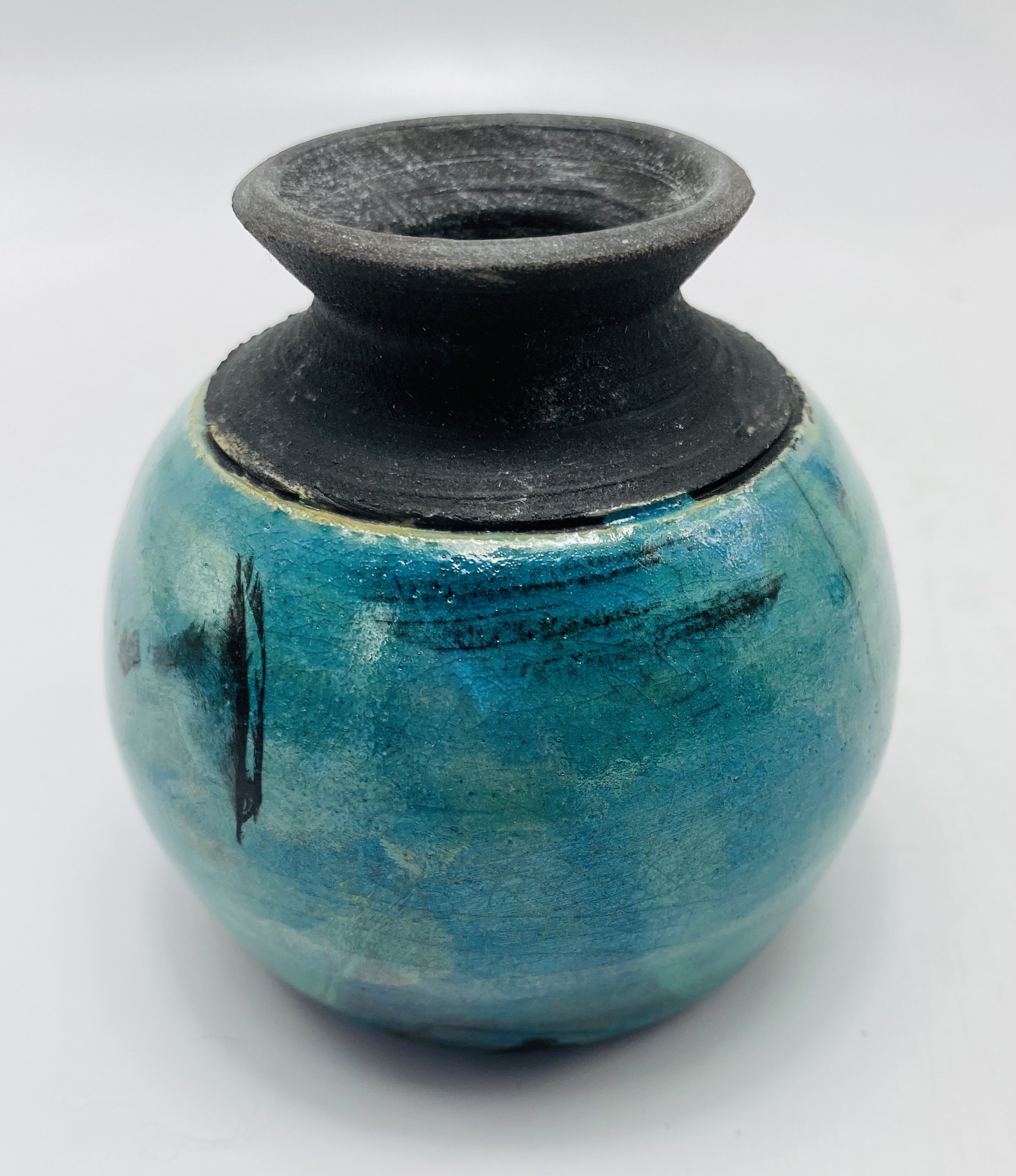


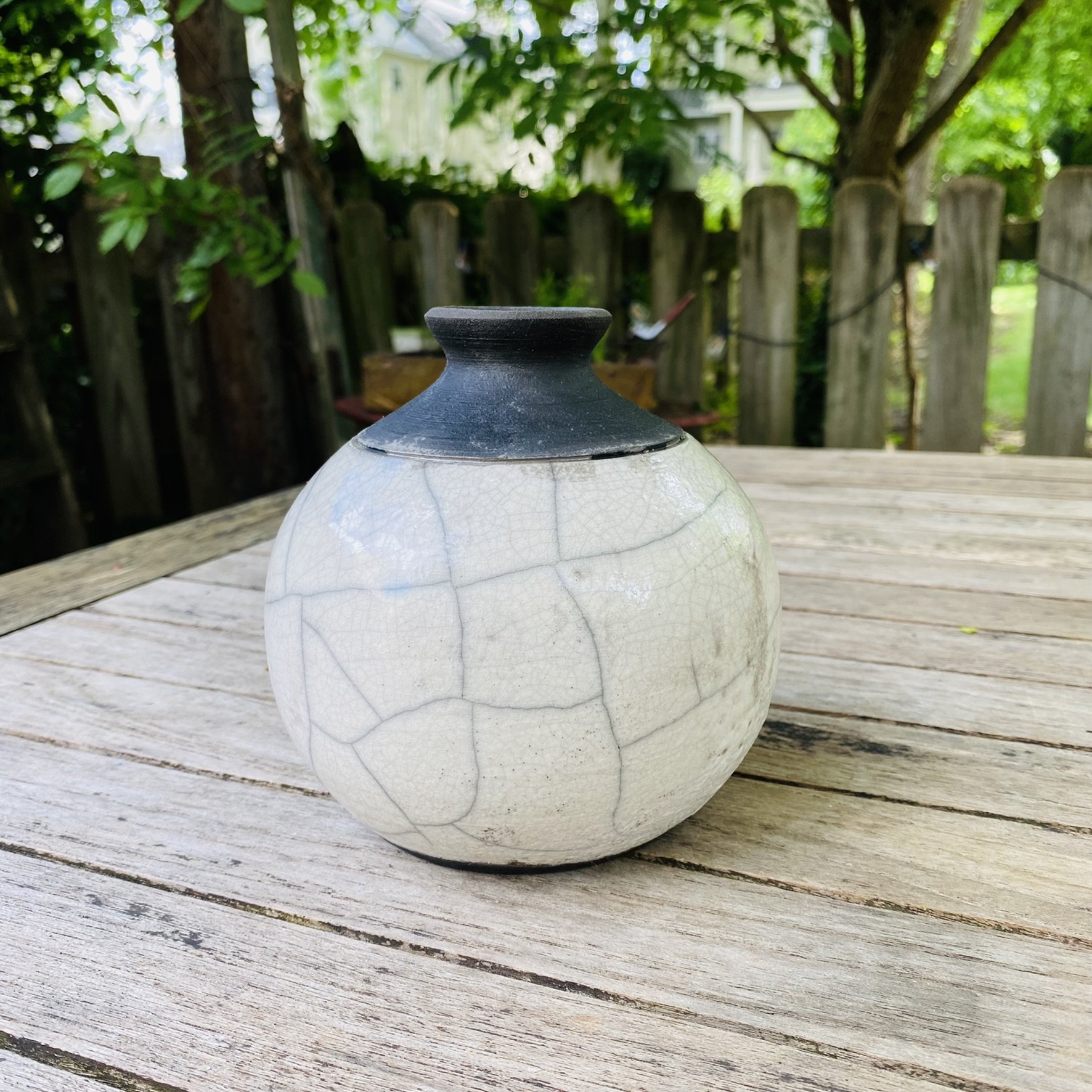










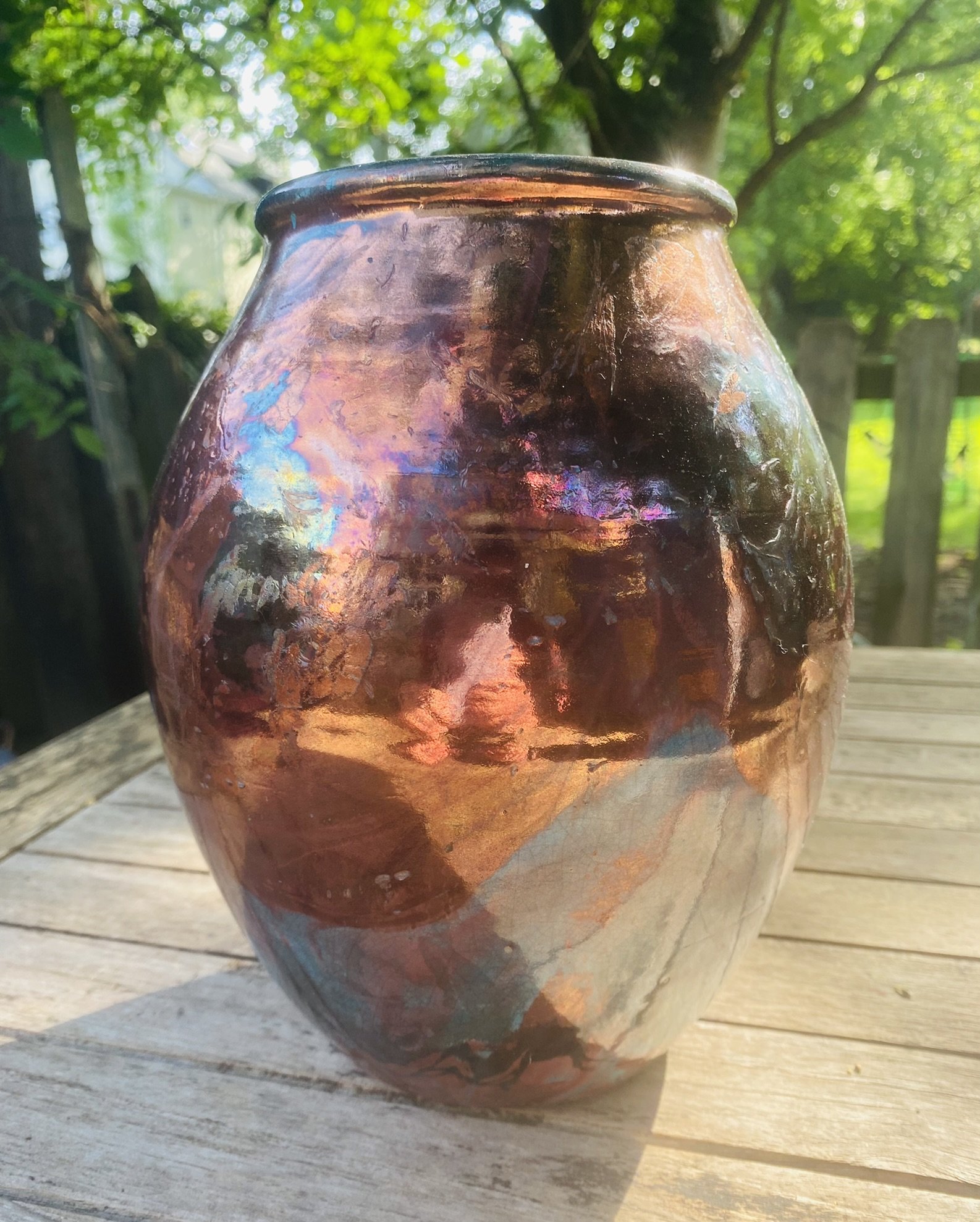












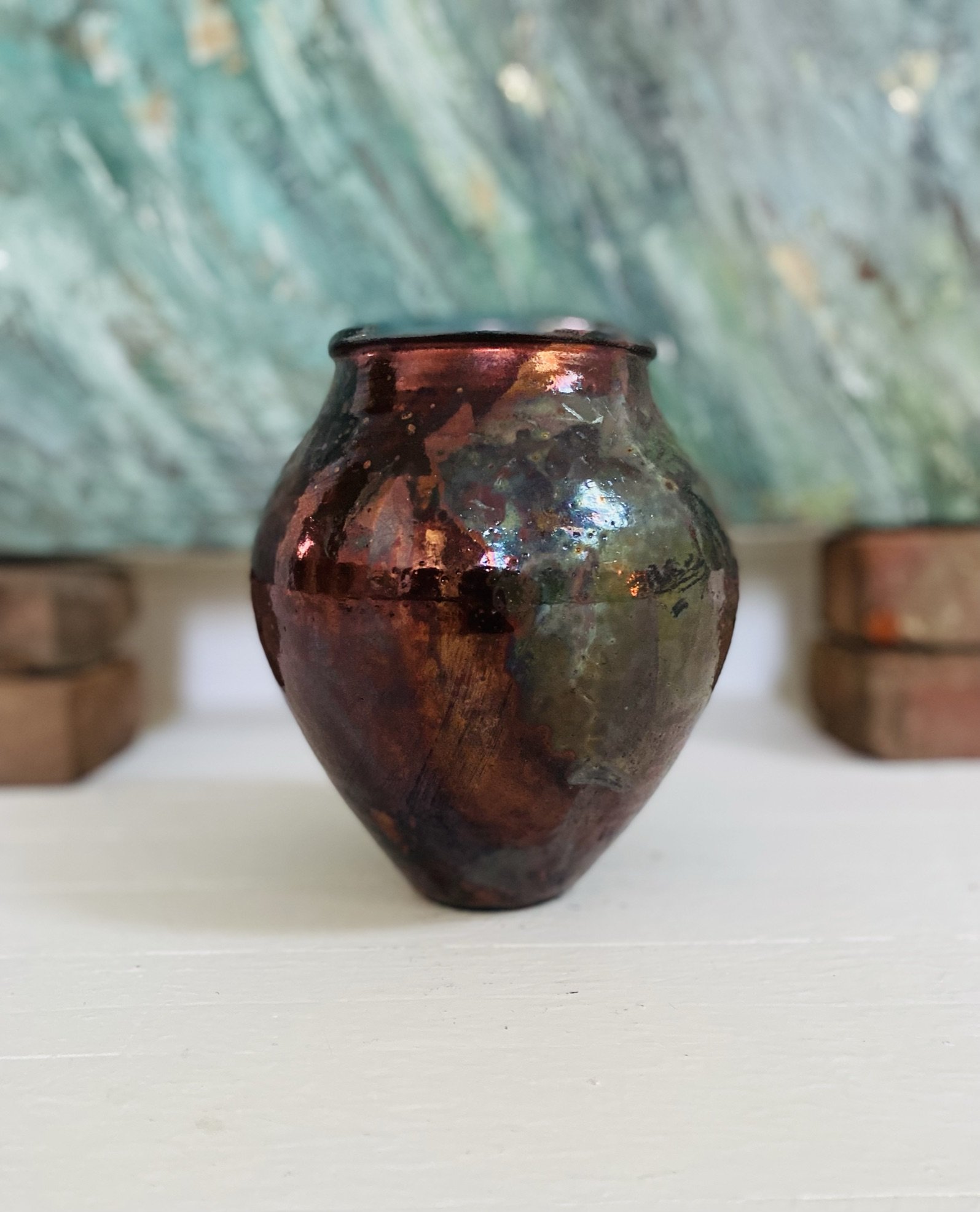

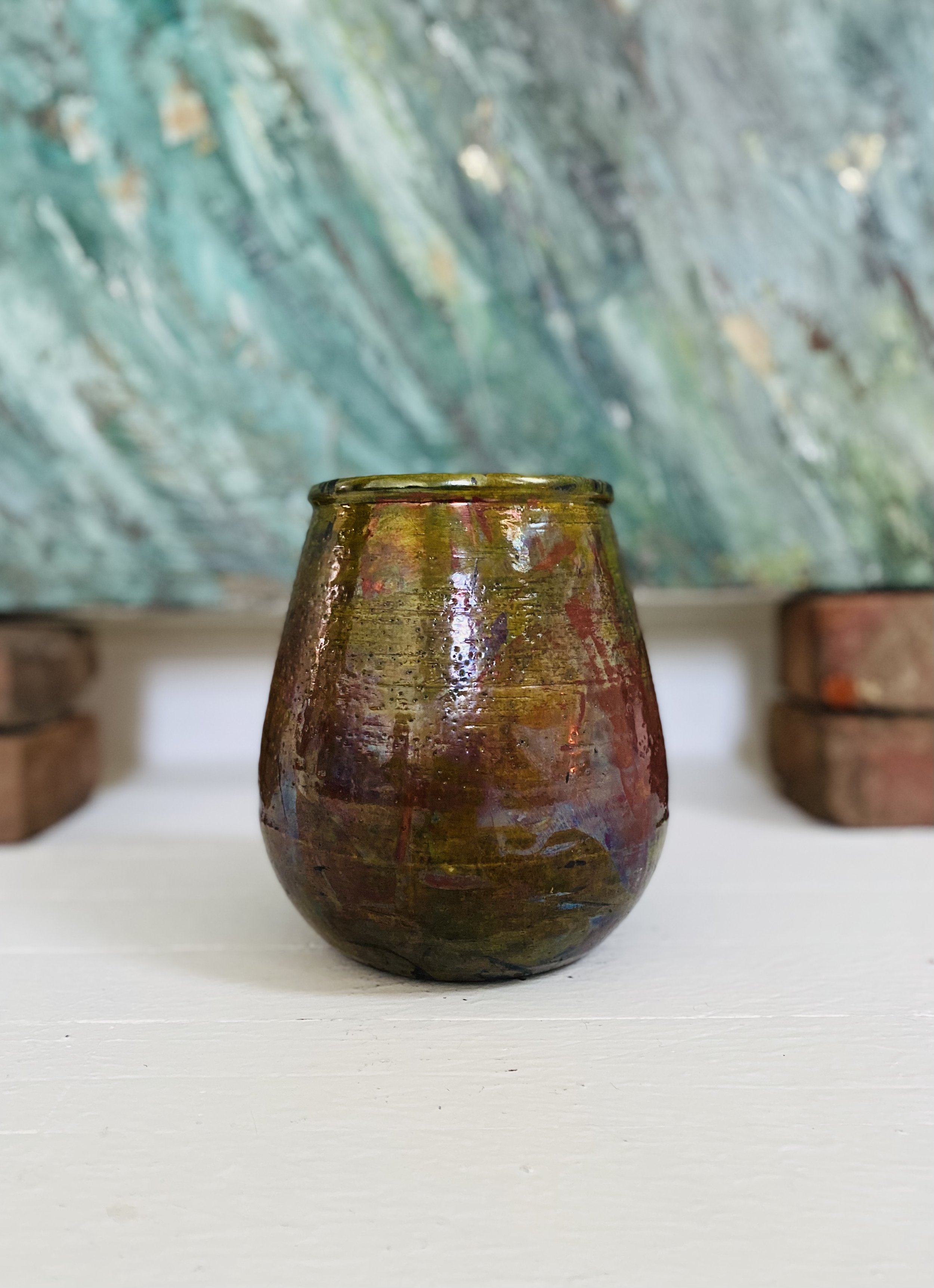




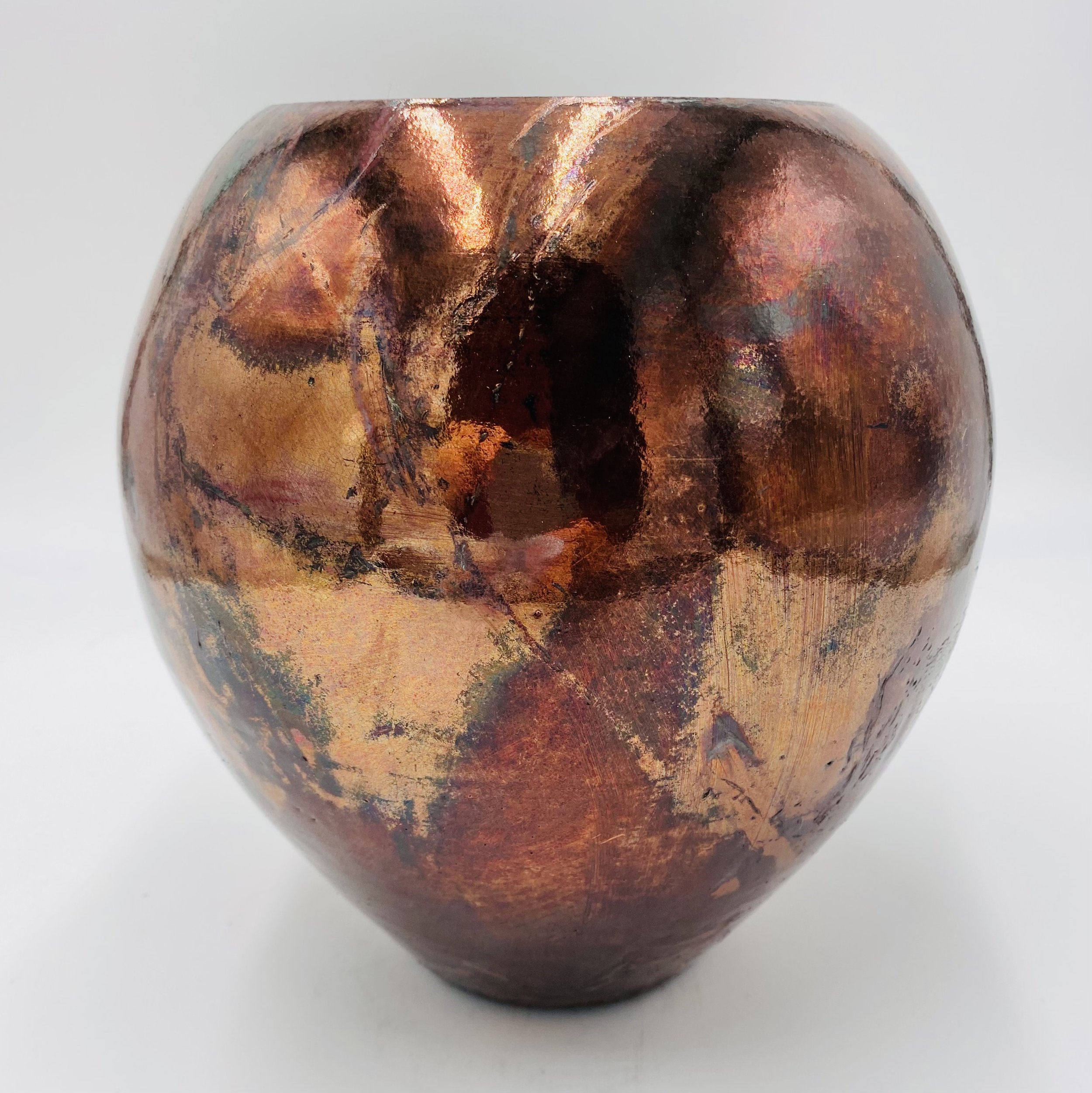

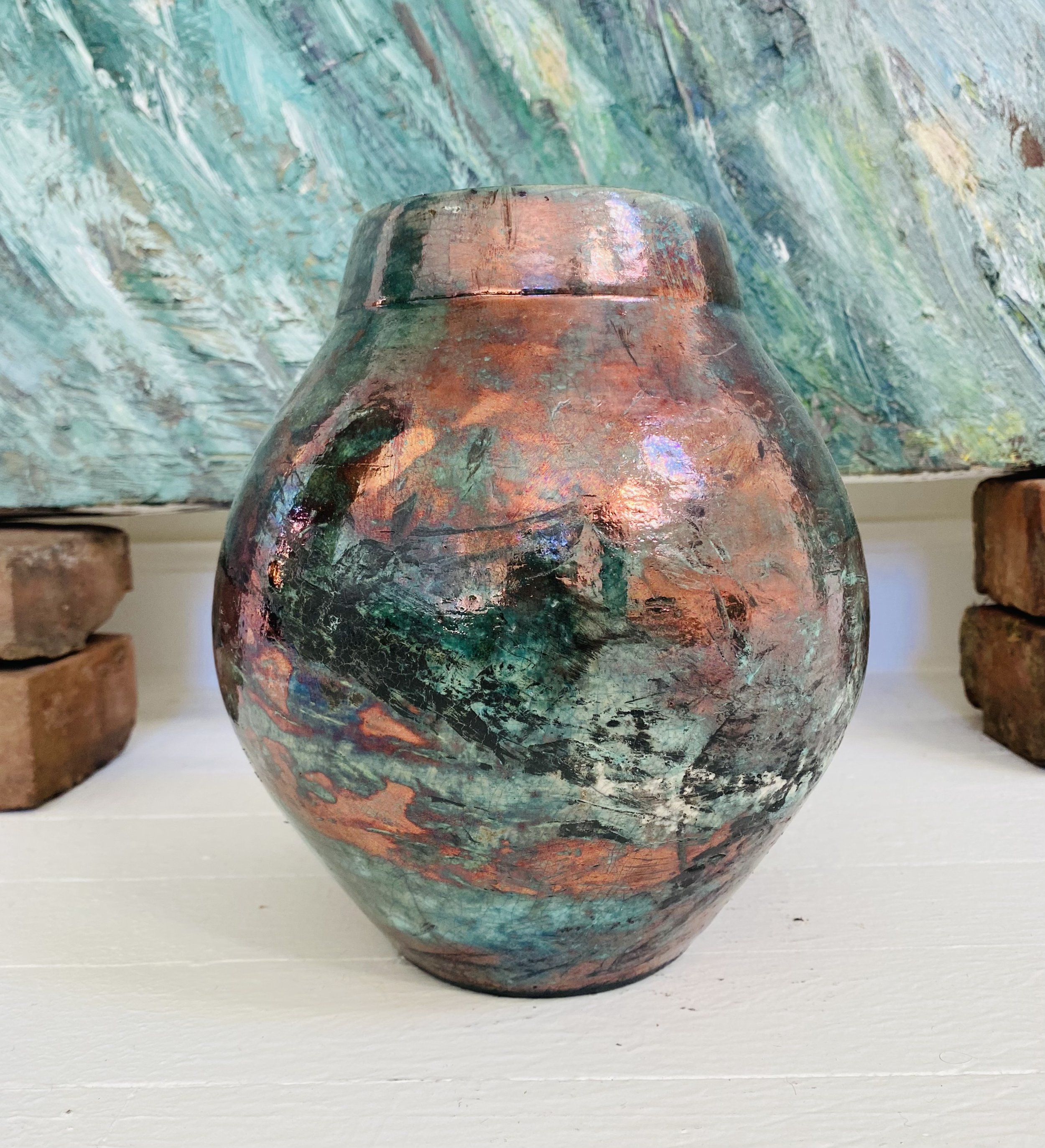




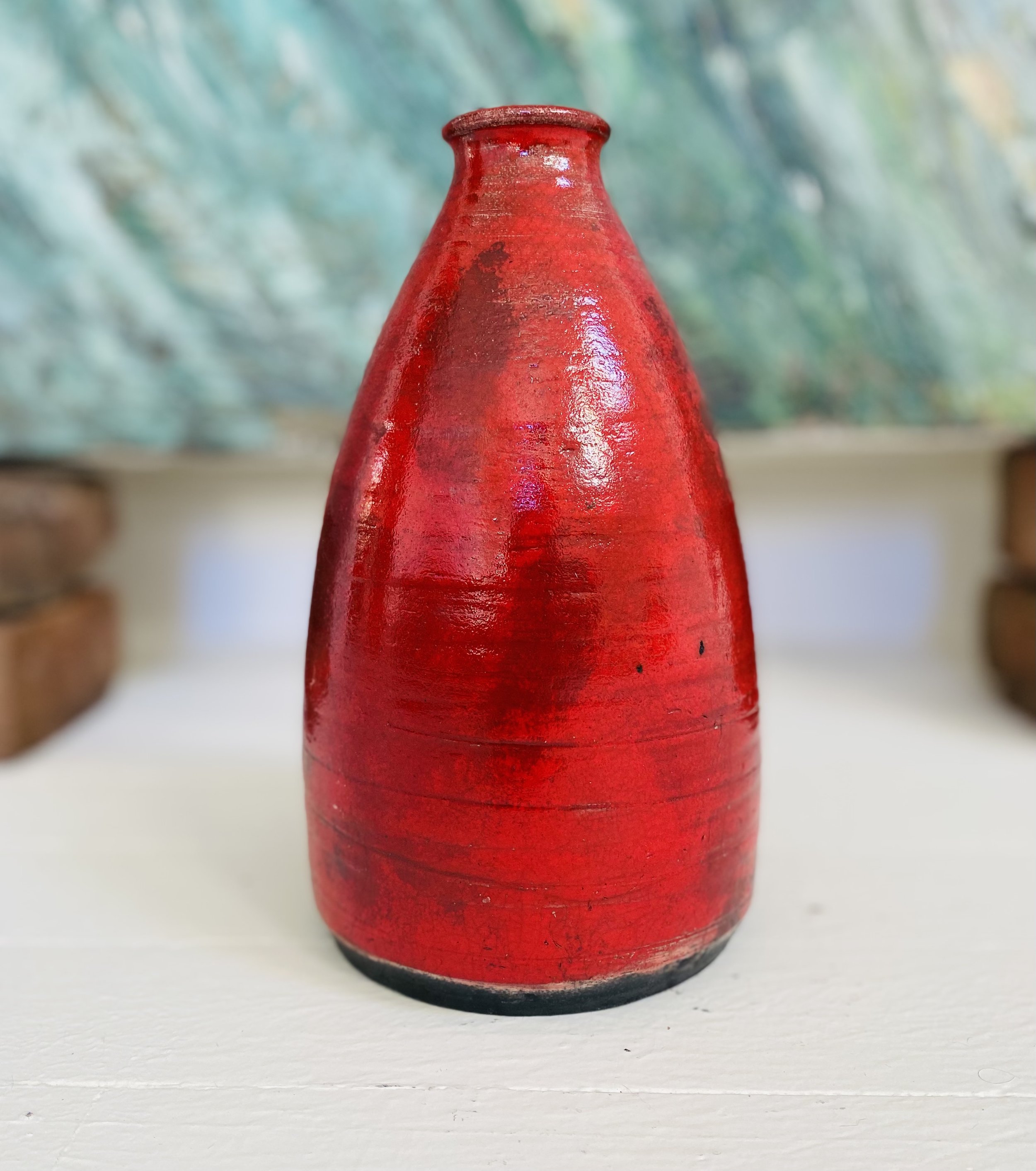





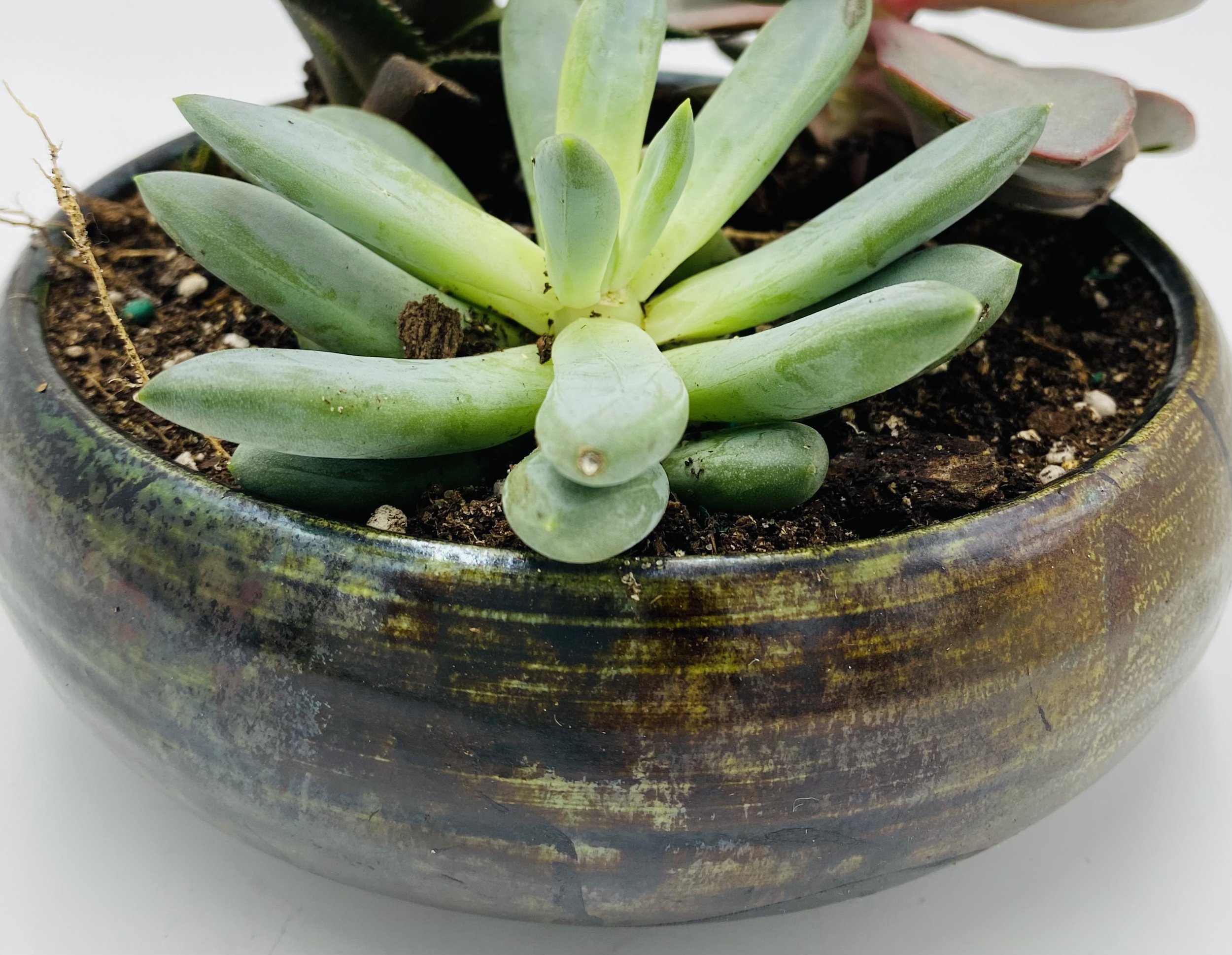



























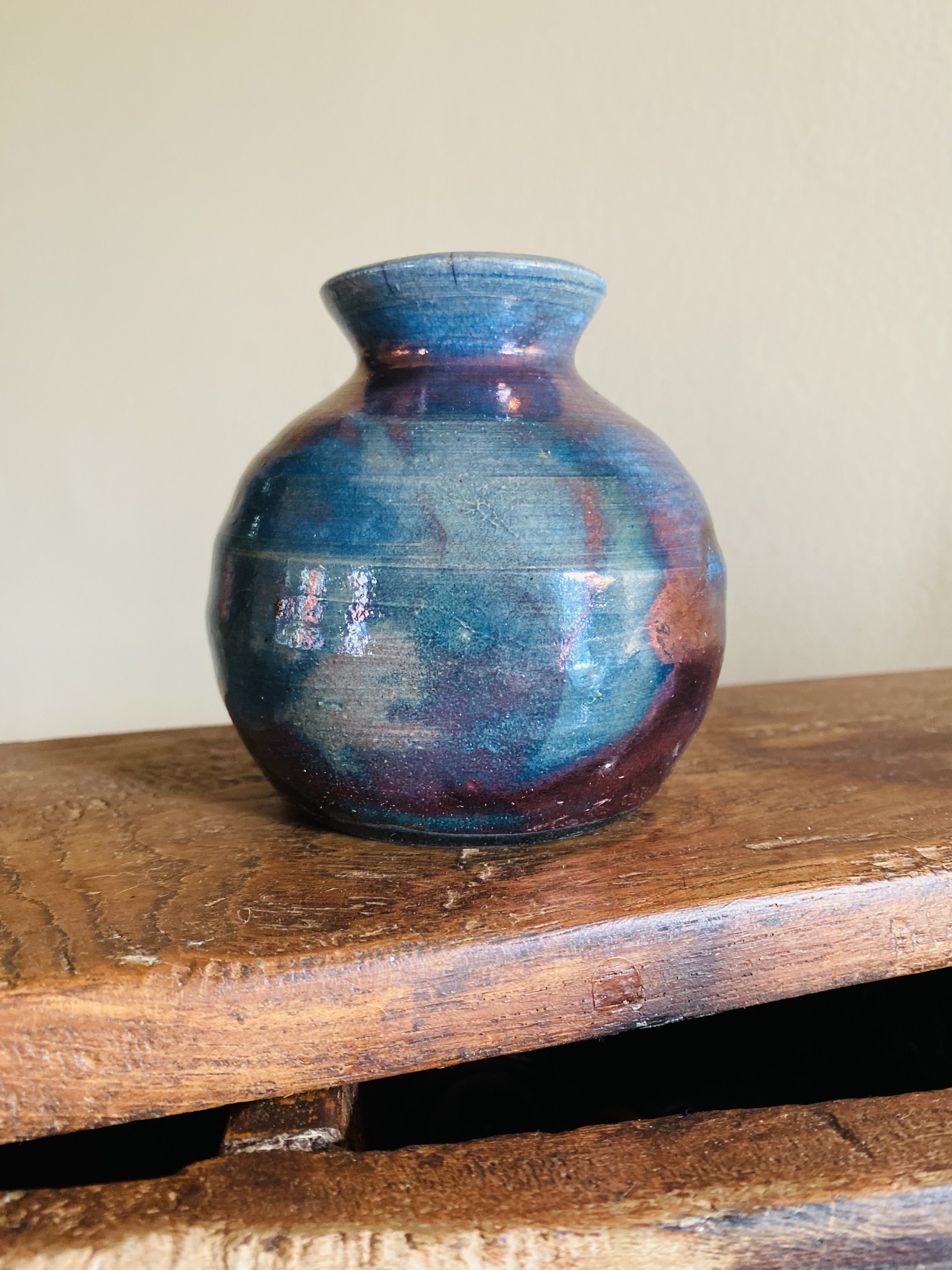










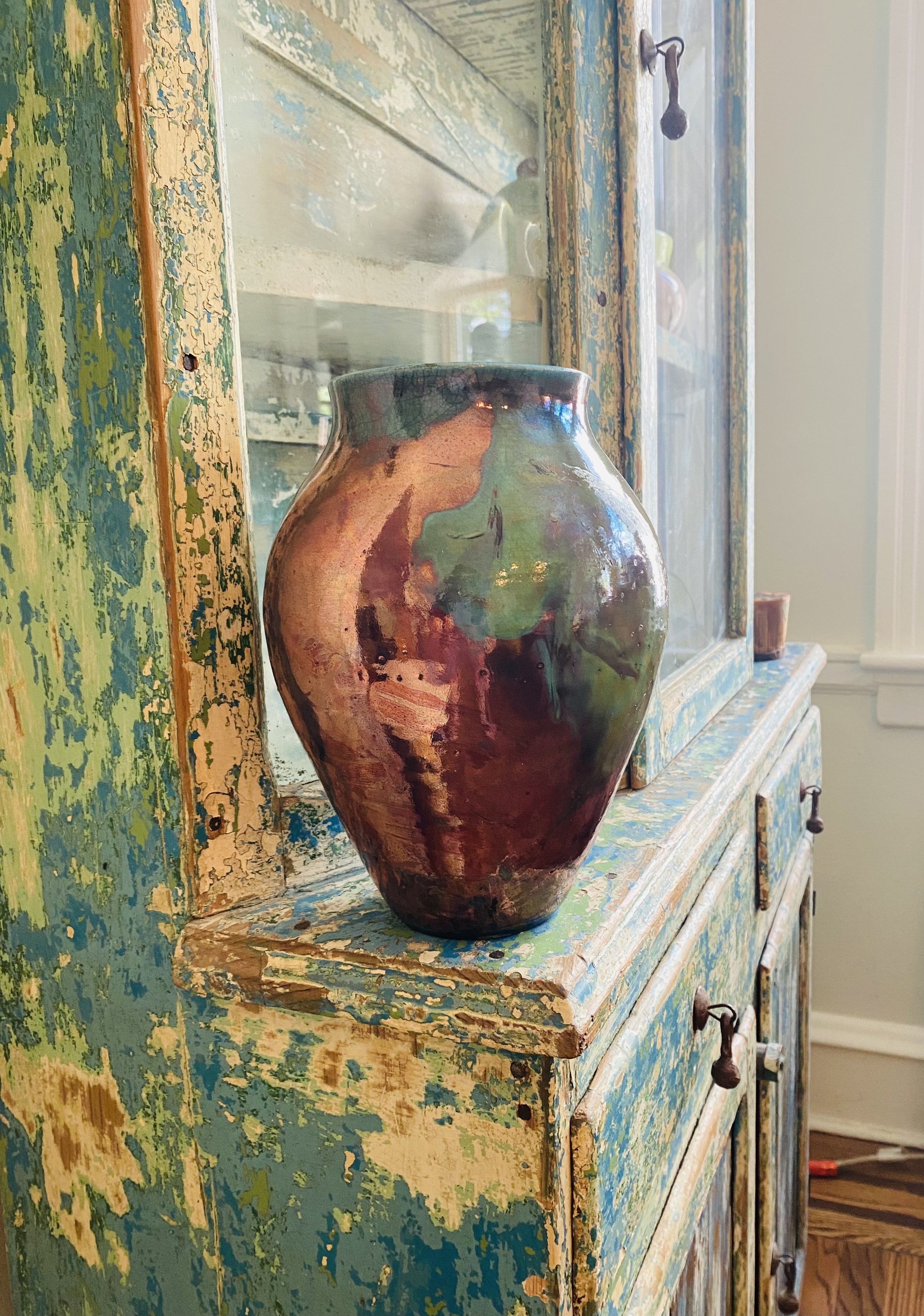




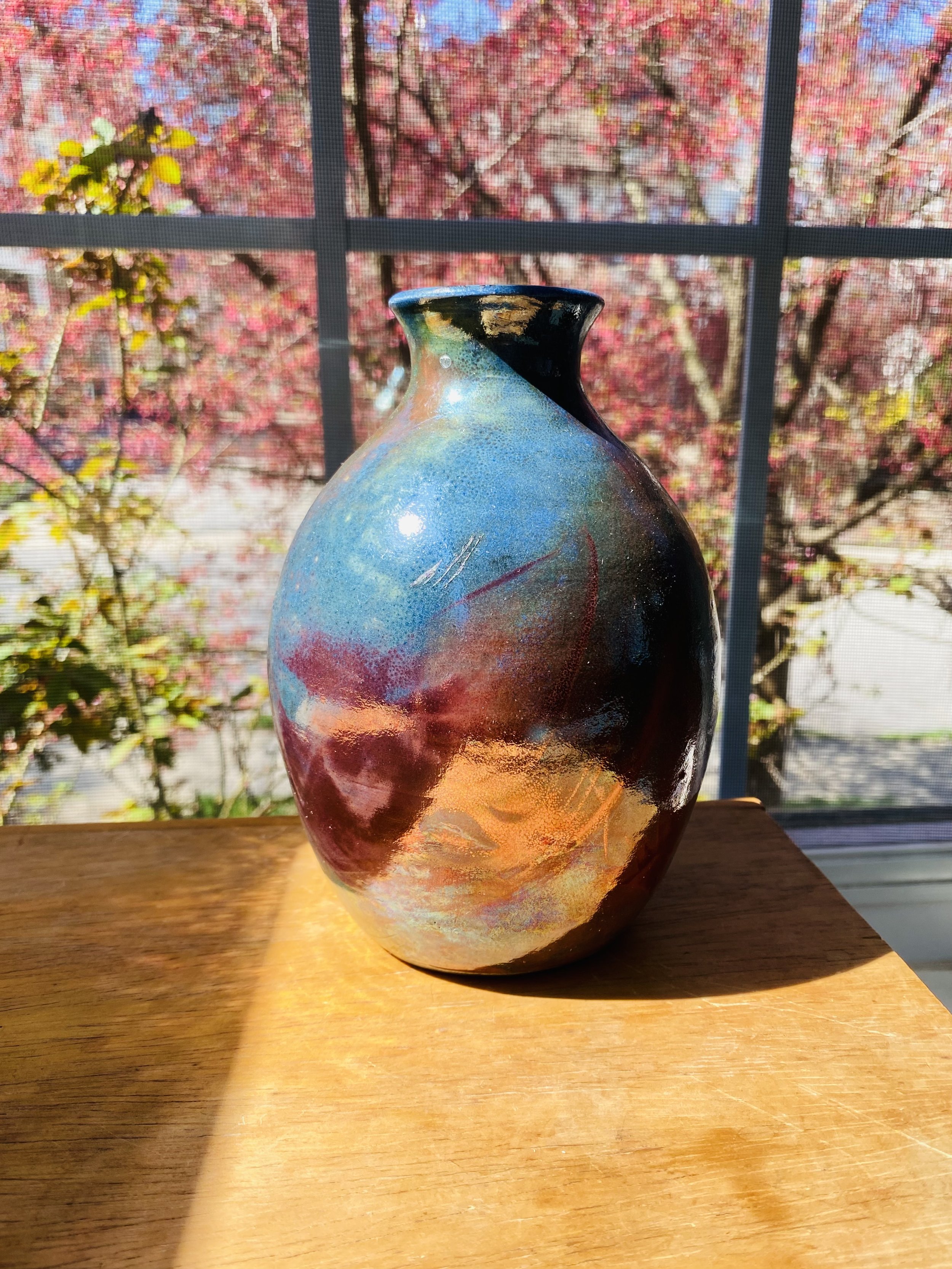




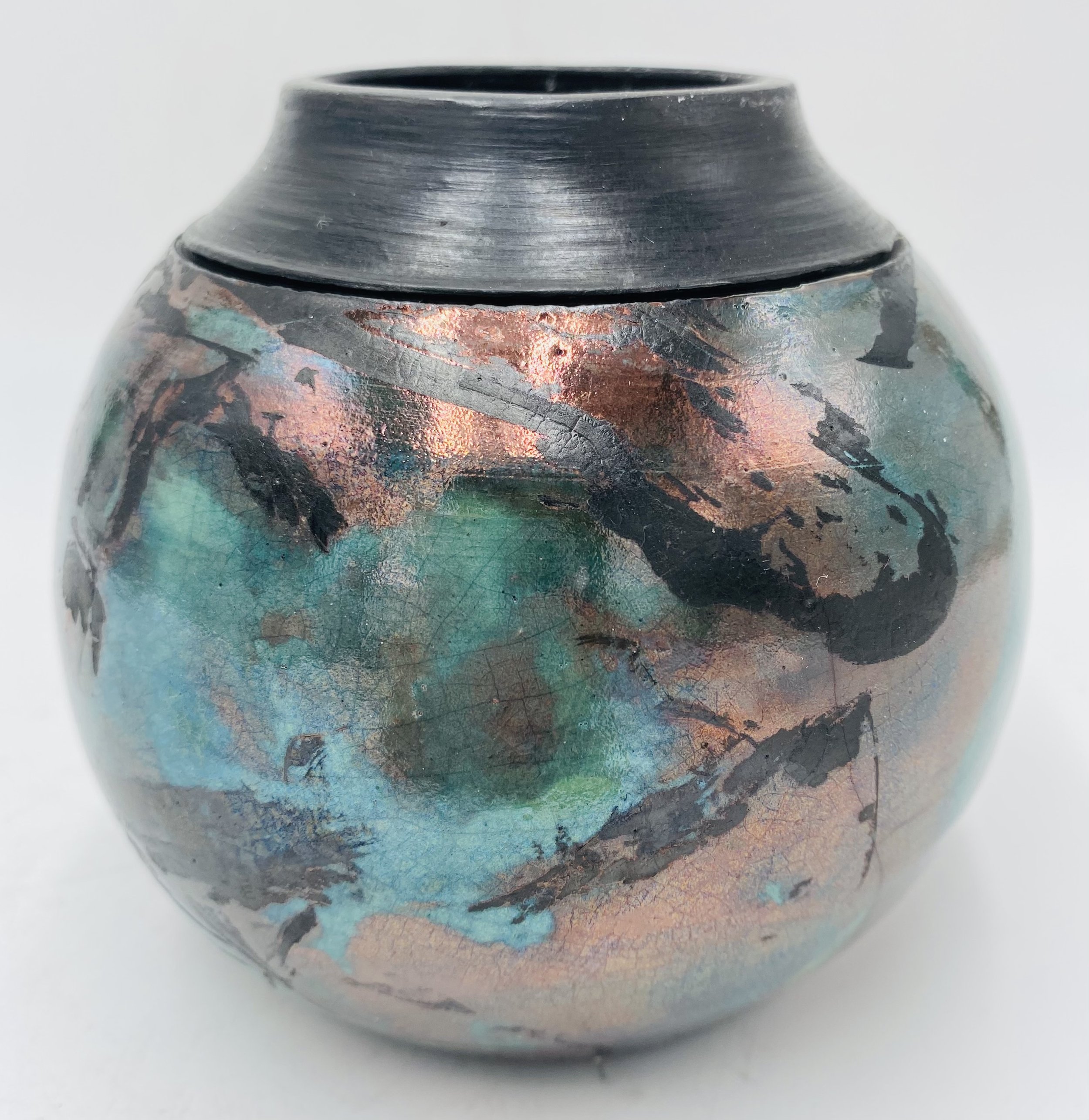


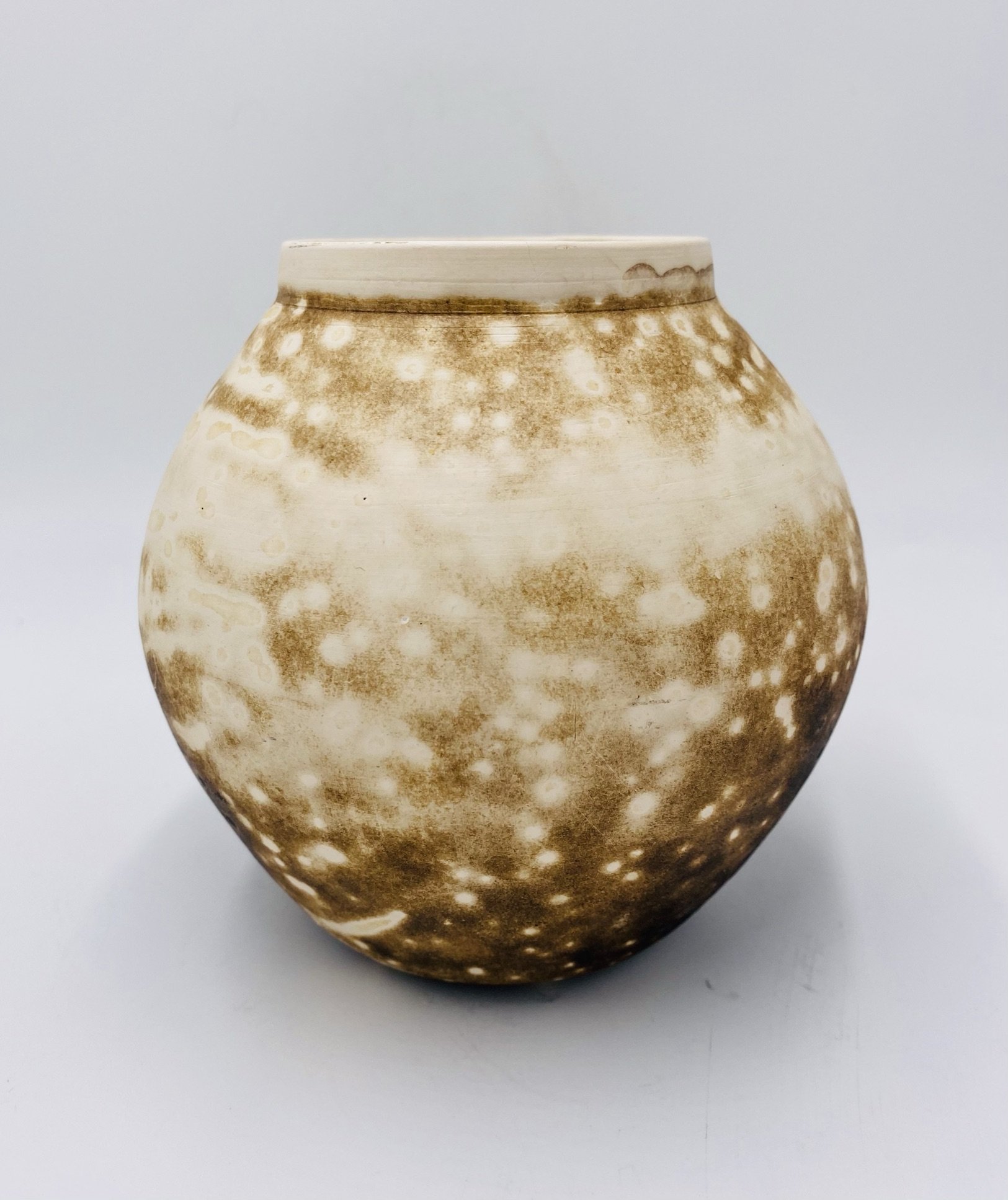


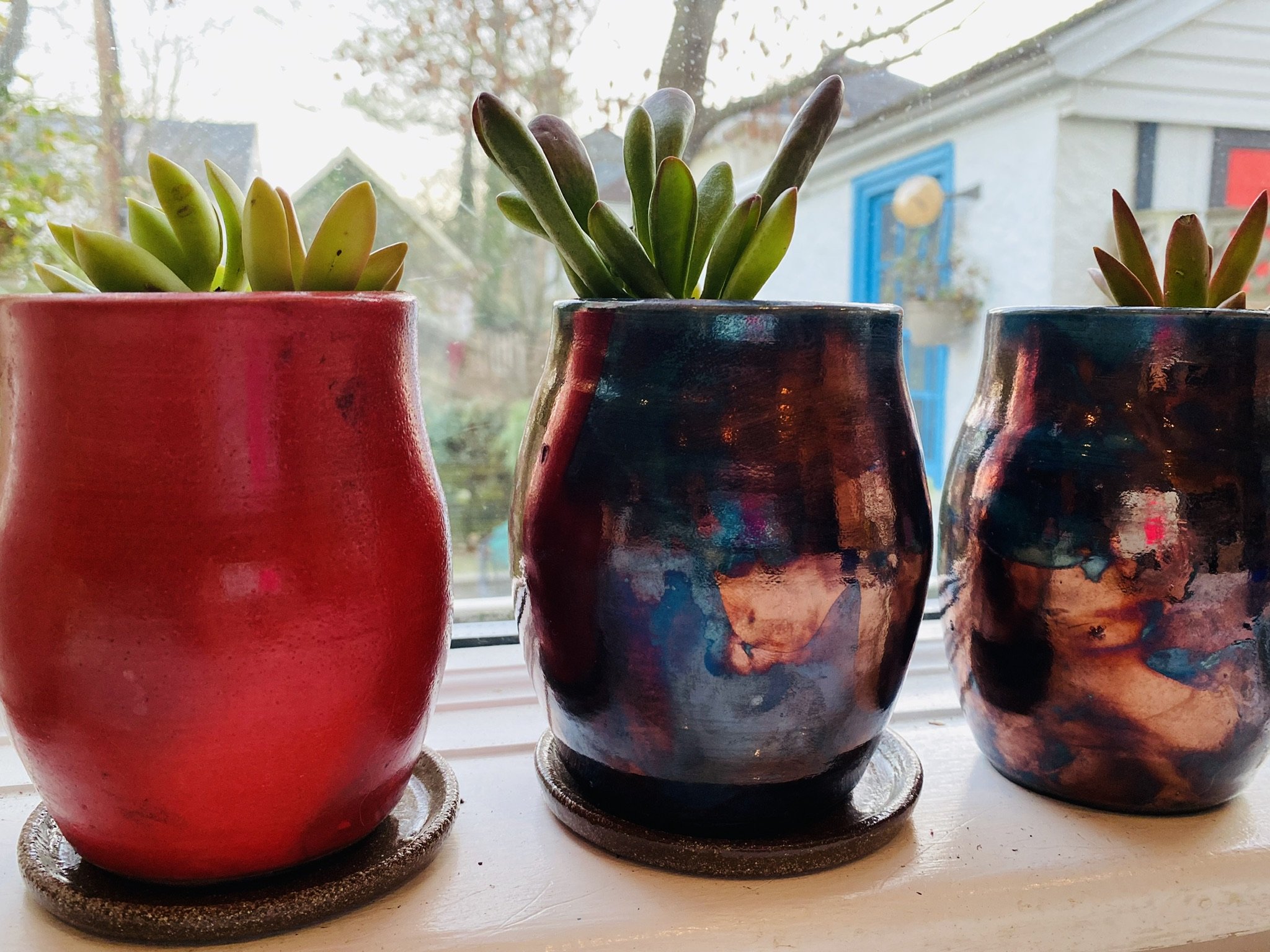




Your Custom Text Here
These beautiful wheel-thrown vases and planters are fired using the raku technique with a variety of different glazes.
The inside is finished with a water sealant so it can be used with real flowers and water.
Raku firing produces unique textures and coloring each time.
Process:
The raku kiln is heated using flame to around 1750°C in about an hour, which is very rapid for pottery firing.
The creation of the many different finishing effects of raku pottery occurs after the pots are removed from the kiln. After removing the kiln lid, the pots are quickly transferred to metal containers that have a layer of combustible material. This material can be anything that burns; dried leaves, strips of newspaper, wood shavings…
After a fire is started, it is essential to cover the containers with a lid. This starves the container of oxygen and allows the glazes to react in a slow burn that is sustained by the residual heat of the pots. The fire sucks all the oxygen from the glaze and then the chemicals and metals in the glaze start to transform. The pots are left in the container for 15-20 minutes and then taken out. The new air can lead the glazes to continue changing. I then decide to let them continue until they naturally stop or spray water to stop the process.
Due to the number of steps involved in the process, only a few pots can be finished with each firing. I have experimented with more pots but found that they lose heat too quickly to effectively bring about the best colors.
The time the kiln lid is removed to the end of the Raku finishing can be frantic, but it is a lot of fun and makes me very connected to the end result!
These beautiful wheel-thrown vases and planters are fired using the raku technique with a variety of different glazes.
The inside is finished with a water sealant so it can be used with real flowers and water.
Raku firing produces unique textures and coloring each time.
Process:
The raku kiln is heated using flame to around 1750°C in about an hour, which is very rapid for pottery firing.
The creation of the many different finishing effects of raku pottery occurs after the pots are removed from the kiln. After removing the kiln lid, the pots are quickly transferred to metal containers that have a layer of combustible material. This material can be anything that burns; dried leaves, strips of newspaper, wood shavings…
After a fire is started, it is essential to cover the containers with a lid. This starves the container of oxygen and allows the glazes to react in a slow burn that is sustained by the residual heat of the pots. The fire sucks all the oxygen from the glaze and then the chemicals and metals in the glaze start to transform. The pots are left in the container for 15-20 minutes and then taken out. The new air can lead the glazes to continue changing. I then decide to let them continue until they naturally stop or spray water to stop the process.
Due to the number of steps involved in the process, only a few pots can be finished with each firing. I have experimented with more pots but found that they lose heat too quickly to effectively bring about the best colors.
The time the kiln lid is removed to the end of the Raku finishing can be frantic, but it is a lot of fun and makes me very connected to the end result!